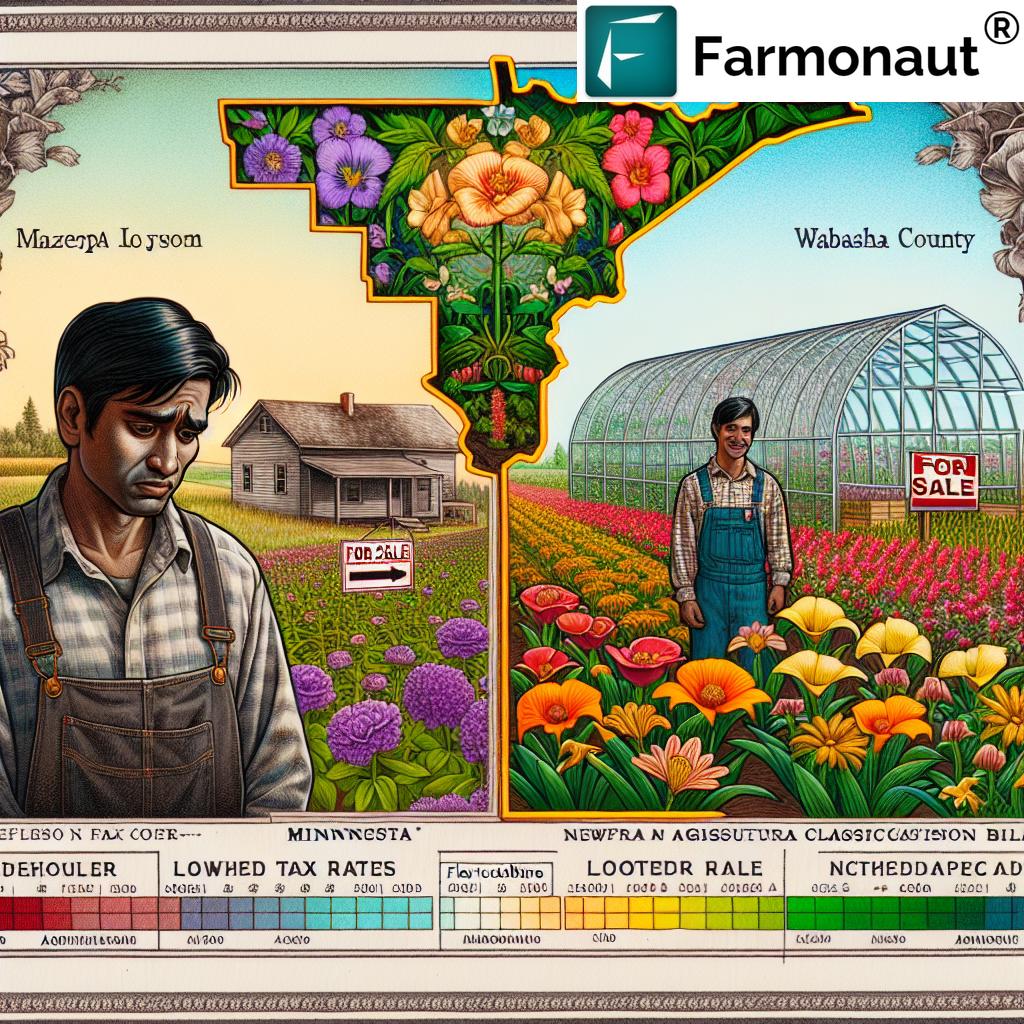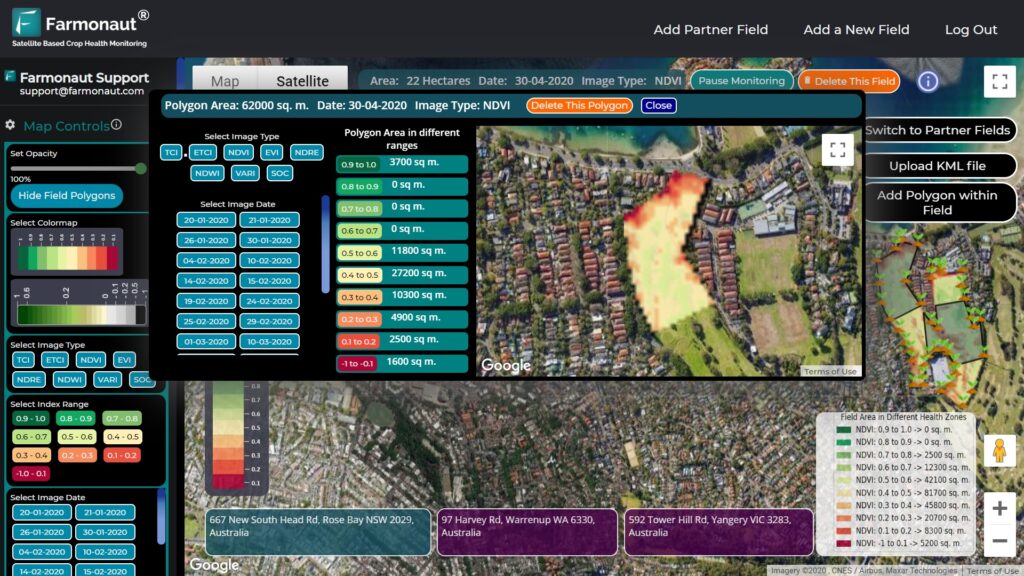Minnesota’s Flower Farms Bloom: New Bill Recognizes Floriculture as Agriculture, Bringing Hope to Small Farmers
“Minnesota’s new bill could impact over 250 flower farms, potentially reducing property taxes for small-scale floriculturists.”
We’re witnessing a significant shift in Minnesota’s agricultural landscape as a new bill aims to recognize floriculture as an agricultural product under state law. This legislative push, inspired by small farms like Bleed Heart Floral Farm in Mazeppa, could bring much-needed tax relief and regulatory clarity to the growing number of cut flower farmers in the state. As we delve into this exciting development, we’ll explore how this change could impact local flower production, specialty crop farming, and the future of agriculture in Minnesota.
The Roots of Change: A New Bill for Flower Farmers
In the rolling farmlands of southeast Minnesota, a small flower farm has sown the seeds of legislative change. Bleed Heart Floral Farm and Design, nestled in the picturesque town of Mazeppa, has inspired a new bill that could redefine the agricultural landscape for flower farmers across the state.
Senate File 2626, introduced by Minnesota Senator Steve Drazkowski, R-Mazeppa, and co-authored by Senator Aric Putnam, D-St. Cloud, aims to officially recognize floriculture as an agricultural product under Minnesota law. This bipartisan effort reflects a broader trend in redefining small and diversified farming in the state, potentially benefiting young farmers entering the industry.

The Current Landscape: Challenges Faced by Flower Farmers
Despite generating significant income, many flower farms currently face residential tax rates due to existing definitions of agricultural products. This classification has led to higher property taxes and steep permitting costs for basic farm structures, creating unnecessary financial burdens for small-scale farmers.
Allie Kuppenbender, owner of Bleed Heart Floral Farm, shared her experience during the April 3 tax committee hearing: “We may be small, but there is serious interest in local flowers, with demand often outpacing supply. This is not a hobby or a backyard garden. It is my family’s main source of income.”
The challenges faced by flower farmers like Kuppenbender highlight the need for regulatory changes that reflect the evolving nature of agriculture in Minnesota. As we explore these issues, it’s important to consider how technology can support farmers in managing their land and crops efficiently. For instance, Farmonaut’s satellite-based farm management solutions offer valuable tools for monitoring crop health and optimizing resource use, which could be particularly beneficial for small-scale specialty crop farmers.
The Proposed Changes: What the New Bill Offers
The new bill aims to make small flower farms like Bleed Heart Floral Farm eligible for agricultural classification, bringing several potential benefits:
- Tax Relief: By classifying flower farms as agricultural, the bill could significantly reduce property tax burdens for small-scale floriculturists.
- Regulatory Clarity: The proposed changes would provide clear guidelines for the classification of flower farms, removing ambiguity in current regulations.
- Support for Small Farms: The bill reflects a growing recognition of the importance of small and diversified farming operations in Minnesota’s agricultural ecosystem.
- Encouragement for Young Farmers: By easing financial and regulatory burdens, the bill could make it more attractive for young people to enter the floriculture industry.
Senator Drazkowski emphasized the importance of this change, stating, “This is about fairness. Flower farmers are working the land, generating the income their families need to survive, and supporting our local economies. They’re farmers in every sense of the word, and the law should reflect that.”
The Impact on Local Flower Production
“Cut flower farming in Minnesota generates millions annually, with some farms producing up to 50,000 stems per season.”
The recognition of floriculture as agriculture could have a significant impact on local flower production in Minnesota. By providing tax relief and regulatory clarity, the bill could encourage more farmers to diversify into cut flower farming or expand their existing operations.
Local flower production offers several benefits to communities:
- Freshness: Locally grown flowers are often fresher than imported alternatives, leading to longer vase life and better quality for consumers.
- Sustainability: Reduced transportation distances mean a lower carbon footprint for locally grown flowers.
- Economic Impact: Money spent on local flowers stays within the community, supporting local farmers and businesses.
- Seasonal Variety: Local flower farms often grow a diverse range of flowers, providing unique and seasonally appropriate options for consumers.
As we consider the potential growth in local flower production, it’s worth noting how technology can support these farmers. For example, Farmonaut’s crop plantation and advisory services could help flower farmers optimize their growing practices and improve yields.
The Broader Context: Redefining Small and Diversified Farming
The proposed bill for flower farmers is part of a larger trend in redefining small and diversified farming in Minnesota. This shift reflects changing consumer preferences, environmental concerns, and the need to support a new generation of farmers.
Key aspects of this broader trend include:
- Recognition of Specialty Crops: The bill aligns with efforts to recognize and support specialty crop farming, including cut flowers, as legitimate agricultural enterprises.
- Support for Young Farmers: By addressing the challenges faced by small-scale farmers, the state is working to make agriculture more accessible to young and beginning farmers.
- Promotion of Diversified Farming: Encouraging diverse farming operations can lead to more resilient local food systems and economies.
- Adaptation to Changing Markets: The bill reflects an understanding that agriculture must adapt to meet changing consumer demands and market conditions.
As we consider these changes, it’s important to recognize the role that technology can play in supporting small and diversified farms. For instance, Farmonaut’s large-scale farm management tools can be adapted to help even small-scale farmers efficiently manage their operations and make data-driven decisions.
Comparative Analysis: Current vs. Proposed Classification
| Aspect | Current Status | Proposed Change |
|---|---|---|
| Tax Classification | Residential | Agricultural |
| Estimated Property Tax Rate | 1.5% (hypothetical) | 0.5% (hypothetical) |
| Farm Structure Permitting | Complex (residential zoning) | Simplified (agricultural zoning) |
| Agricultural Product Recognition | Not Recognized | Recognized |
| Estimated Number of Benefiting Farms | N/A | 250+ (estimated) |
The Road Ahead: Implementing the Changes
While the proposed bill offers hope for flower farmers, there are still steps to be taken before these changes can be implemented. The bill, which would take effect for taxes payable in 2027, was laid over and will be considered for a larger tax bill later in session.
Key considerations for implementation include:
- Legislative Process: The bill must pass through the necessary legislative channels before becoming law.
- Local Implementation: County assessors and local governments will need to adapt their processes to accommodate the new classification.
- Farmer Education: Outreach and education will be crucial to ensure flower farmers understand and can benefit from the new classification.
- Monitoring Impact: It will be important to track the impact of these changes on flower farms and local economies over time.
As we look to the future of floriculture in Minnesota, it’s worth considering how technology can support farmers in adapting to these changes. For example, Farmonaut’s carbon footprinting tools could help flower farmers demonstrate their environmental sustainability, potentially opening up new market opportunities.

The Potential Impact on Minnesota’s Agricultural Landscape
The recognition of floriculture as agriculture could have far-reaching effects on Minnesota’s agricultural landscape:
- Diversification: More farmers might be encouraged to diversify their crops to include cut flowers, leading to a more resilient agricultural sector.
- Economic Boost: The growth of the floriculture industry could provide an economic boost to rural communities.
- Innovation: Recognition and support for specialty crops like cut flowers could foster innovation in farming practices and technologies.
- Environmental Benefits: Flower farms often employ sustainable practices, potentially contributing to improved soil health and biodiversity.
As the agricultural landscape evolves, tools like Farmonaut’s fleet management solutions could help larger flower farms optimize their operations and reduce costs.
The Role of Technology in Supporting Flower Farmers
As we consider the future of flower farming in Minnesota, it’s crucial to recognize the role that technology can play in supporting these agricultural enterprises. Advanced farm management tools can help flower farmers optimize their operations, improve yields, and demonstrate their environmental sustainability.
Some key technological solutions that could benefit flower farmers include:
- Satellite-Based Crop Monitoring: Tools like those offered by Farmonaut can provide real-time insights into crop health, helping farmers make informed decisions about irrigation and pest management.
- Weather Forecasting: Accurate weather predictions can help flower farmers protect their crops from adverse conditions and plan harvests more effectively.
- Resource Management: Technology can help farmers optimize their use of water, fertilizers, and other inputs, reducing costs and environmental impact.
- Market Analysis: Data-driven tools can help farmers understand market trends and adjust their crop planning accordingly.
By leveraging these technologies, flower farmers can enhance their productivity and sustainability, further strengthening the case for recognizing floriculture as a legitimate agricultural enterprise.
The Voice of the Farmers: Personal Experiences
The stories of farmers like Allie Kuppenbender of Bleed Heart Floral Farm highlight the real-world impact of current regulations and the potential benefits of the proposed changes. Kuppenbender’s experience of generating over $50,000 per acre last season, yet still being classified as residential for tax purposes, underscores the disconnect between current regulations and the realities of modern, diversified farming.
Kuppenbender’s testimony provides valuable insights:
- Financial Challenges: High property taxes and permitting costs create significant financial burdens for small flower farms.
- Regulatory Hurdles: Current regulations often fail to recognize the agricultural nature of flower farming operations.
- Market Demand: There is strong local demand for cut flowers, often outpacing supply.
- Economic Impact: Flower farms can generate significant income per acre, contributing to local economies.
These personal experiences underscore the importance of adapting regulations to support the changing face of agriculture in Minnesota.
Looking to the Future: The Potential of Minnesota’s Flower Farms
As we look to the future, the potential for growth in Minnesota’s flower farming sector is significant. With supportive legislation and access to modern farming technologies, flower farms could become an increasingly important part of the state’s agricultural landscape.
Key areas of potential include:
- Agritourism: Flower farms could become destinations for tourists, offering pick-your-own experiences and farm tours.
- Education: These farms could serve as educational resources, teaching about sustainable farming practices and local ecosystems.
- Community Building: Local flower farms can contribute to a sense of community, providing fresh, locally-grown flowers for events and celebrations.
- Innovation Hub: The floriculture sector could become a hub for agricultural innovation, driving advancements in sustainable farming practices.
As the industry grows, tools like Farmonaut’s crop loan and insurance solutions could help flower farmers secure the financial support they need to expand and innovate.
Conclusion: A Blooming Future for Minnesota’s Flower Farms
The proposed bill to recognize floriculture as agriculture in Minnesota represents a significant step forward for small farmers and the agricultural sector as a whole. By addressing the unique challenges faced by flower farmers, this legislation could pave the way for a more diverse, resilient, and sustainable agricultural landscape in the state.
As we’ve explored, the potential benefits of this change are far-reaching:
- Tax relief and regulatory clarity for small flower farms
- Support for young and beginning farmers
- Encouragement of agricultural diversification
- Potential boost to local economies
- Promotion of sustainable farming practices
While the road ahead may still have challenges, the recognition of floriculture as agriculture opens up exciting possibilities for Minnesota’s farmers and communities. As the industry evolves, we can look forward to a future where flower farms play an increasingly important role in the state’s agricultural tapestry, supported by innovative technologies and forward-thinking policies.
FAQ Section
- Q: What is the main goal of the new bill for flower farmers in Minnesota?
A: The main goal is to officially recognize floriculture as an agricultural product under Minnesota law, providing tax relief and regulatory clarity for flower farmers. - Q: How might this bill affect property taxes for flower farmers?
A: If passed, the bill could potentially reduce property taxes for flower farmers by classifying their land as agricultural rather than residential. - Q: When would these changes take effect if the bill is passed?
A: The proposed changes would take effect for taxes payable in 2027. - Q: How many flower farms could potentially benefit from this legislation?
A: It’s estimated that over 250 flower farms in Minnesota could potentially benefit from this legislation. - Q: What challenges do flower farmers currently face under existing regulations?
A: Current challenges include higher property taxes, steep permitting costs for farm structures, and lack of recognition as agricultural enterprises.
As we conclude this exploration of Minnesota’s blooming flower farm industry, it’s clear that the future holds great potential for these agricultural entrepreneurs. With supportive legislation and access to innovative technologies, flower farmers are poised to play an increasingly important role in the state’s agricultural landscape.
Earn With Farmonaut: Affiliate Program
Earn 20% recurring commission with Farmonaut’s affiliate program by sharing your promo code and helping farmers save 10%. Onboard 10 Elite farmers monthly to earn a minimum of $148,000 annually—start now and grow your income!
Farmonaut Subscriptions
For flower farmers looking to leverage cutting-edge technology in their operations, Farmonaut offers a range of solutions:
For developers interested in integrating Farmonaut’s technology into their own applications, check out our API and API Developer Docs.











